9 Must-Haves When Hiking With Kids
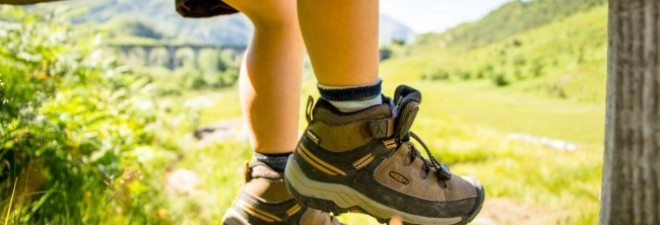
Hiking with kids can be an incredibly rewarding experience, providing opportunities for bonding, learning, and adventure in the great outdoors. However, it also requires careful planning and consideration to ensure everyone’s safety and enjoyment.
In addition to gathering the right gear and supplies, there are several other essential aspects to keep in mind when planning a hike with kids. In this blog, we will explore a variety of tips and strategies to help you make the most of your family hiking adventure, including the items you’ll want to be sure to bring along!
1. Kid-friendly backpacks
Choosing the right hiking backpack for kids is essential to ensure their comfort, safety, and enjoyment during outdoor adventures. Kids have unique needs, and their backpacks should be tailored to accommodate those needs. Here are some factors to consider when selecting a good hiking backpack for kids:
Size and Capacity: The size of the backpack should be appropriate for your child’s age and size. Look for packs designed specifically for kids, as they are typically smaller and have adjustable straps to provide a comfortable fit. Consider the capacity based on the duration of your hikes and the items your child needs to carry, like water, snacks, and a change of clothing.
Comfort and Fit: A well-fitting backpack is crucial to prevent discomfort and strain during the hike. Ensure that the backpack has adjustable straps for the shoulders, chest, and hips, allowing for customisation to your child’s body. Padded shoulder straps and a breathable back panel can enhance comfort, especially during longer hikes.
Durability: Kids can be rough on their gear, so opt for a backpack made from durable materials that can withstand the rigours of outdoor activities. Reinforced seams, sturdy zippers, and water-resistant fabrics are valuable features to consider.
Weight Distribution: Pay attention to how the backpack distributes weight. Heavier items should be placed closer to your child’s back and higher up in the pack to maintain balance and prevent strain. Ensure that the backpack has compartments and pockets for organised packing.
Hydration Compatibility: Staying hydrated is crucial on the trail. Look for backpacks that are hydration compatible, meaning they have a designated sleeve or pocket for a hydration reservoir (water bladder) and a hose port for easy access to water.
Reflective Elements: Safety should always be a priority. Look for backpacks with reflective elements or bright colors to enhance visibility, especially if you’ll be hiking in low-light conditions.
Adjustability: Kids grow quickly, so a backpack with adjustable features is a wise choice. Straps and waist belts that can be modified to accommodate your child’s growth ensure that the backpack can be used for multiple seasons.
Reviews: Research reputable brands known for their quality outdoor gear. Reading reviews and seeking recommendations from other parents who hike with their kids can also provide valuable insights into the best backpack options.
Try Before You Buy: Whenever possible, have your child try on the backpack before purchasing. This allows you to ensure a proper fit and assess their comfort while wearing it.
2. Lightweight jacket
A lightweight jacket is a versatile piece of clothing that should be a staple in your kid’s hiking gear. Even on sunny days, the weather in the great outdoors can be unpredictable. A lightweight jacket can provide protection from sudden rain showers, gusty winds, or cooler temperatures at higher altitudes.
Look for one that is made from a breathable and water-resistant material to keep your child comfortable and dry.
3. Hat
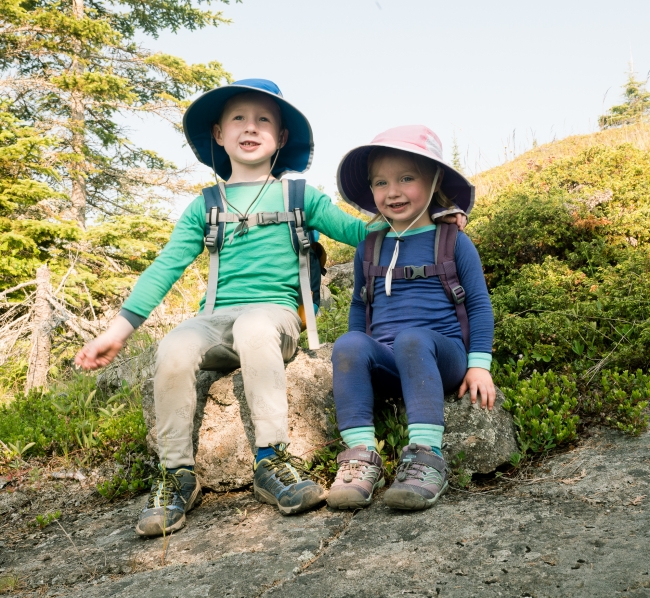
A hat serves multiple purposes on a hike. Firstly, it provides shade, protecting your child’s face, neck, and eyes from the harsh sun.
Secondly, it can help keep your child’s head warm in cooler weather. Opt for a wide-brimmed hat with a chin strap to ensure it stays in place, especially on windy days.
4. Sunscreen
Sunscreen is non-negotiable when hiking with kids. Their young skin is more susceptible to sunburn, and prolonged sun exposure can be harmful.
Choose a broad-spectrum sunscreen with a high SPF rating and apply it generously to all exposed skin, including the face, neck, and ears. Don’t forget to reapply throughout the hike, particularly if it’s sunny or if your child sweats.
5. First Aid Kit
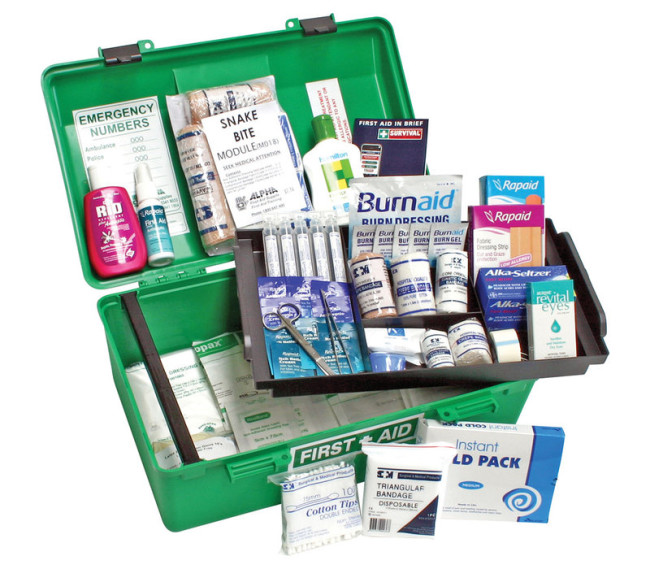
Safety should always be a top priority when hiking, and a well-equipped first aid kit is an essential item. Your first aid kit should include adhesive bandages, antiseptic wipes, tweezers, blister treatment, pain relievers suitable for children, and any necessary medications for your child. Ensure that you or another adult in the group knows how to use the items in the kit.
6. Snacks
Hiking can be physically demanding, and kids often need a steady supply of energy to keep them going. Pack a variety of healthy snacks that your child enjoys, such as trail mix, energy bars, fruit slices, or granola. Snack breaks not only keep your child energized but also offer moments to rest, refuel, and take in the surroundings.
7. Water
Hydration is crucial on a hike, especially for active kids who tend to lose fluids quickly. Carry an adequate supply of water for your child in a reusable water bottle or hydration reservoir (if your child is using a backpack).
Make sure to remind your child to drink regularly, and be prepared to refill their water as needed at natural water sources if you’re hiking a longer trail.
8. Brightly colored clothing
Dressing your child in brightly colored clothing serves two essential purposes. Firstly, it makes them more visible, which is especially important if you’re hiking near hunters during hunting season or on trails with other hikers. Secondly, bright colors can be a source of fun and excitement for kids, making the hike more enjoyable for them.
9. Comfortable hiking shoes
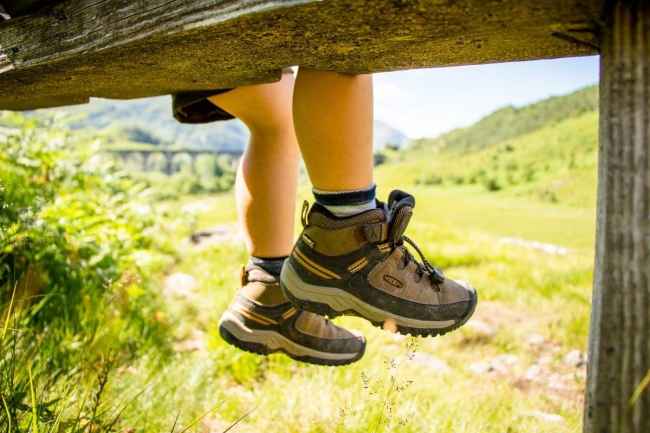
The right footwear is arguably the most critical piece of gear for a successful hike. Ill-fitting or uncomfortable shoes can lead to blisters and discomfort, which can quickly turn a fun hike into a miserable experience. Invest in a pair of comfortable hiking shoes or boots for your child, ensuring they have a good fit and provide adequate support for the terrain you plan to encounter.
When preparing for a hike with kids, packing the right essentials is key to ensuring their safety, comfort, and enjoyment. Lightweight jackets, hats, sunscreen, first aid kits, snacks, water, brightly colored clothing, and comfortable hiking shoes are must-have items that will help your child have a positive hiking experience.
With the right gear in tow, you can embark on memorable outdoor adventures as a family, fostering a love for nature and creating lasting memories. Remember that proper preparation ensures a successful hike, so check the weather, plan your route, and always prioritise safety when hiking with kids.
Tips for planning a hike with kids
Check the weather
Checking the weather before embarking on a hike with kids is a fundamental step in ensuring their safety and the overall success of your outdoor adventure. Weather conditions can change rapidly in many regions, and being caught unprepared can lead to discomfort, health risks, or even dangerous situations.
By checking the weather forecast, you can make informed decisions about appropriate clothing, gear, and the type of hike to undertake. For example, knowing that rain is expected can prompt you to pack rain jackets, while awareness of extreme heat can help you plan for extra water and shaded rest stops.
Additionally, knowledge of impending storms or severe weather can guide you in rescheduling or choosing a safer activity for your family, prioritising your children’s well-being above all else.
Pick the right kid-friendly hiking path
Selecting the right trail is the foundation of a successful hike with kids. Consider the following factors when choosing your hiking destination:
Distance and Difficulty: Opt for trails that are manageable for the age and physical capabilities of your children. Shorter, less strenuous hikes are usually ideal for beginners.
Trail Features: Look for trails with interesting features like waterfalls, lakes, or wildlife, which can capture the kids’ attention and keep them engaged.
Proximity: Pick a trail that is not too far from home, as long drives can be tiring for kids. Also, check if the trailhead is easily accessible.
Facilities: Some trails offer restrooms, picnic areas, and other amenities that can be beneficial for families with kids.
Plan rest stops
Children may need more breaks than adults during a hike, so plan for regular rest stops. These breaks not only help recharge their energy but also allow them to explore and interact with nature. Bring along some healthy snacks and water to keep them hydrated and fueled throughout the hike.
Set realistic expectations
It’s essential to set realistic expectations for the hike. Communicate with your kids about the duration, distance, and potential challenges of the hike beforehand. Let them know that it’s okay to take breaks and that the journey is as important as the destination.
Engage their curiosity
Encourage your kids to be curious and observant while hiking. Bring along a field guidebook or a nature identification app to help them identify plants, animals, and insects. This can turn the hike into an educational experience and keep them engaged.
Safety first
Safety should be a top priority when hiking with kids. Ensure that your children are dressed appropriately for the weather and that they have proper footwear. Teach them about trail etiquette, such as staying on marked paths and avoiding potentially dangerous areas.
Familiarise with wildlife and plants
Before the hike, educate your children about local wildlife and plants. Teach them which plants are safe to touch and which should be avoided. Discuss the importance of respecting wildlife from a distance and not feeding them.
Bring a first aid kit
Accidents can happen on the trail, so it’s crucial to carry a well-stocked first-aid kit. Be prepared to address minor injuries like cuts, scrapes, or insect bites promptly.
Teach leave no trace principles
Instill the Leave No Trace principles in your kids from a young age. Teach them the importance of packing out all trash, not picking plants, and respecting the natural environment. By fostering an appreciation for nature, you’re helping to create responsible stewards of the environment.
Encourage teamwork
Hiking as a family provides an excellent opportunity to instill teamwork and cooperation. Assign responsibilities like map reading, carrying snacks, or leading the way to different family members. This not only empowers kids but also fosters a sense of togetherness.
Capture memories
Don’t forget to capture the special moments of your hike. Encourage your kids to take photos or draw sketches of the scenery and wildlife. These mementos can serve as lasting memories of your outdoor adventures together.
Hiking with kids can be a wonderful way to connect with nature and create lasting family memories. By carefully planning your hike, choosing an appropriate trail, and considering the unique needs and interests of your children, you can ensure a safe and enjoyable outdoor experience.
Remember that the journey is just as important as the destination, and the skills and appreciation for nature that your children develop during these outings can last a lifetime. So, pack your bags, lace up your hiking boots, and embark on an unforgettable family adventure in the great outdoors.
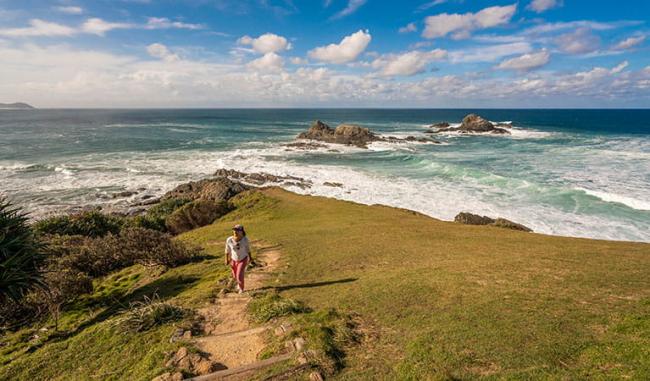
Book your stay at Broken Head Holiday Park
If you’re seeking an idyllic destination to create cherished family memories amidst the beauty of nature, look no further than Broken Head Holiday Park near Byron Bay, Australia. This coastal paradise offers the perfect setting for families to reconnect, unwind, and immerse themselves in the great outdoors.
With its stunning beachfront location, diverse range of accommodation, and a wealth of outdoor activities, Broken Head Holiday Park invites you to escape the hustle and bustle of everyday life and embrace the tranquility and adventure that this remarkable destination has to offer.
Book your stay today and embark on an unforgettable journey filled with sun, surf, and quality time with your loved ones in this breathtaking corner of Australia.









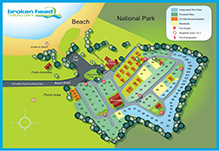

This Post Has 0 Comments